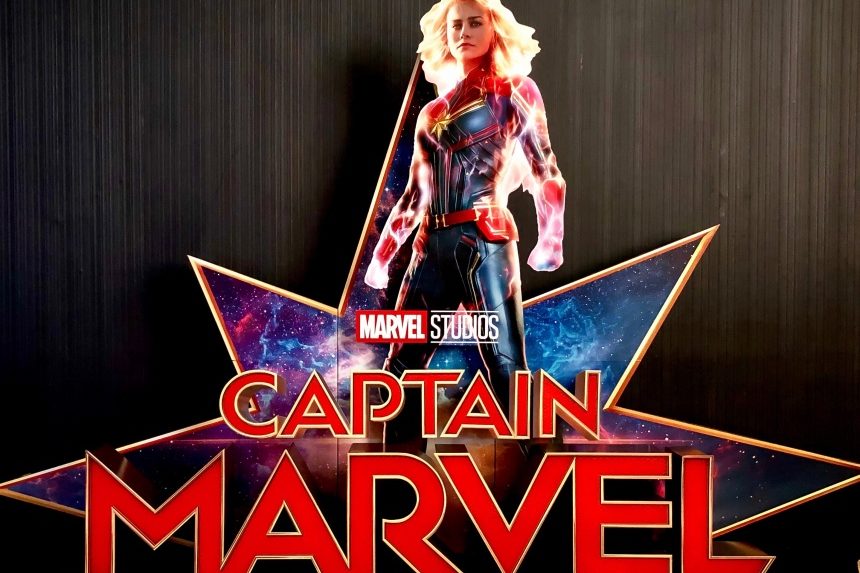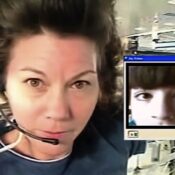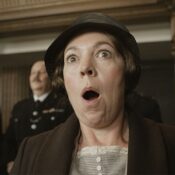The first female-led film from Marvel Studios, Captain Marvel, starring Brie Larson, opens in wide release just in time for International Women’s Day. It’s an appropriate date, given both the tone and history of the character Carol Danvers. With over 50 years of comics behind her, she’s been a journalist, a fighter pilot, an Avenger, and more. As the certain box office hit opens, we look back at five things you should know about the Captain, and why she’s not the only hero to bear the name.
1. Wasn’t the Shazam! guy called Captain Marvel?
It’s a source of a lot of confusion in both fandom and mainstream circles, but yes, there have been a few Captain Marvels at different companies. The most obscure (and goofiest) was a character from M.F. Enterprises that appeared in a comic series in the mid-1960s. This Captain Marvel was an alien robot that could detach his limbs. However, the character only appeared in a handful of issues before receiving a career-ending legal smackdown during a case that involved both Marvel Comics and DC Comics.
The “Shazam!” Captain Marvel debuted in 1939 in Whiz Comics #2 from Fawcett Comics (the cover date says 1940, but it hit stores a bit earlier). Created by Bill Parker and C.C. Beck, young Billy Batson was chosen by the wizard Shazam to receive super-powers (and an adult body) when he said the wizard’s name. The utterance gave him the wisdom of Solomon, the strength of Hercules, the stamina of Atlas, the power of Zeus, the courage of Achilles, and the speed of Mercury. Billy adopted the name Captain Marvel for his adventuring. In the 1940s, sales of the character rivaled, and occasionally surpassed, those of Superman. Unfortunately for Fawcett, National (as DC was known at that time) took umbrage to the similarities between the good Captain and Superman, and sued in 1941. The legal challenges went on for years through multiple trials and iterations before Fawcett settled for $400,000 and stopped publishing Captain Marvel titles by 1954.
In 1967, Marvel decided to publish their own book called Captain Marvel, starring an alien superhero (more on him in a minute). They registered the trademark. When DC licensed the Shazam! characters from Fawcett for a revival in the 1970s, Marvel challenged them over the use of the title. Since that time, all of DC’s books featuring the character have used the Shazam title due to Marvel’s copyright. Since the 2000s, the character itself is now called Shazam in the comics, and shall be in April’s Shazam! film as well.
2. So who are the Captain Marvels of Marvel Comics?
The first Marvel Comics Captain Marvel was, wait for it, Captain Mar-Vell. Created by Stan Lee and artist Gene Colan, Mar-Vell debuted in Marvel Super-Heroes #12 in 1967. A human-looking alien from the Kree Empire, Mar-Vell is sent to Earth to spy on our planet’s developing space program. Mar-Vell eventually turns against his masters and fights to protect the planet under his new heroic identity. He would become an ally and member of the Avengers.
Originally introduced as a love interest for Mar-Vell by Colan and writer Roy Thomas, Carol Danvers first appeared in Marvel Super-Heroes #13. An Air Force officer, Danvers is handling security at a base and meets Dr. Walter Lawson (Mar-Vell’s newly adopted secret identity). A few issues later, Danvers is caught in an explosion caused by an alien device. Since this is Marvel Comics, accidents with radiation and alien devices invariably give you super-powers.
When Carol Danvers showed up again, it was to headline the new comic Ms. Marvel in 1977. As the titular hero, Danvers had gained super-strength, speed, and the power of flight. The “Ms.” served as a hat-tip to Gloria Steinem; in fact, Danvers would soon be running a magazine and demanding equal pay for her work. She too joined the Avengers and was a mainstay of that comic for several years, even after hers was cancelled in 1979 with issue #23. After some unfortunate writing and editorial decisions removed Danvers from the Avengers title, popular X-Men writer Chris Claremont (who had also written issues of Ms. Marvel) stepped in and brought Danvers to his stable of books in 1982. He gave her a power-up and the new name Binary and sent her off into space with Marvel’s space pirate characters, the Starjammers.
With Ms. Marvel in space and Mar-Vell gone (the character died of cancer in a 1982 special), the name Captain Marvel was available. Writer Roger Stern and artist John Romita Jr. created a new Captain Marvel for The Amazing Spider-Man Annual #16 in 1982. The fact that the new Captain was a black woman, New Orleans harbor patrol officer Monica Rambeau, generated a lot of positive publicity and some mild shock in some fan circles. The energy-powered Rambeau became popular quickly, joining (surprise!) the Avengers and even landing the cover of Marvel’s first role-playing game in 1984. Rambeau ran with the Captain Marvel name until 1996, when she ceded it to Mar-Vell’s son Genis and took the identity of Photon. Rambeau has since had a few different code names; today she’s called Spectrum. During this time, Carol returned to Earth, rejoined the Avengers, and used the name Warbird before becoming Ms. Marvel again.
As for Genis-Vell (created by Ron Marz and Ron Lim), he’s one of three children of Mar-Vell (dude got around). Both Genis and Mar-Vell’s daughter, Phyla, have used the Captain Marvel name over time. Genis headlined a couple of solo series, joined the Thunderbolts, and eventually allowed himself to be destroyed when his powers got out of control and threatened the universe. Phyla-Vell (created by Peter David and Paul Azaceta) would likewise run through a few code names, but her adventures have primarily been showcased alongside the team that she joined, the Guardians of the Galaxy. Mar-Vell’s third child is Teddy Altman, aka Hulkling. The son of Mar-Vell and a Skrull princess, Teddy uses his shape-shifting and strength powers as a member of the Young Avengers, usually preferring an appearance resembling a teen Hulk.
For a brief period, Kree hero Noh-Varr, known as Marvel Boy, was persuaded by villain Norman Osborn to join his so-called Dark Avengers as a new Captain Marvel. Noh-Varr used the name for only a brief time. He soon abandoned Osborn for a role with both the main Avengers team, where he went by the name Protector, and the Young Avengers.
In 2012, Carol finally took the name Captain Marvel and got a new first issue. Written by Kelly Sue DeConnick with art by Dexter Soy, this comic launched the stories that serve as the basis for the character that will be seen in the new film. Danvers maintains membership in the Avengers, but she also leads Alpha Flight, Earth’s space-based first line of defense against alien threats.
3. Speaking of alien threats, who are the Kree and the Skrulls?
The Kree Empire is a conglomeration of worlds run by the Supreme Intelligence. An amalgam of all the great Kree minds stretching back centuries, the Intelligence is seen in comics as a giant green head. In the film, it will be seen as a regular-sized Annette Bening. Kree look like humans, though a number of them have blue skin tones. They frequently represent themselves as having good intentions, but that’s not always the case. Their search for genetic purity resulted in the creation of the Inhumans characters, and other machinations have put them in conflict with the heroes of Marvel Comics many times.
The Skrulls are the sworn enemies of the Kree. Distinguished by green skin, wrinkly chins, and pointy ears, the Skrulls use their shape-shifting abilities to spy and sow chaos. First encountered by the Fantastic Four in their second issue, the Skrulls have bedeviled the Marvel Universe for years, notably during the Secret Invasion story of the 2000s, when they kidnapped and replaced a number of heroes.
The biggest Kree/Skrull story is the “Kree-Skrull War,” which took place over the course of nine issues of The Avengers between 1971 and 1972; it was written by Roy Thomas with art by Neal Adams, Sal Buscema, and John Buscema. It’s been reported that some elements of this story surface in the Captain Marvel film.
4. What makes Captain Marvel important as a character?
Carol Danvers has been breaking stereotypes about female comic book characters for over 50 years. Her military background, ever-increasing power-set, and take-charge demeanor set her apart. The character has been depicted as having to overcome obstacles like sexism, but also personal demons like alcoholism and a rough childhood. She doesn’t always make the right decisions, and her strong will occasionally places her at odds with other heroes.
Nevertheless, she fights from a place of good intentions and maintains a number of strong friendships with other female heroes like Spider-Woman (Jessica Drew) and Rambeau. Her romantic life is often a mess, but that has never been a defining characteristic. Her prominent role in the Marvel Universe is shown to have inspired other heroes. Muslim teen Kamala Khan (created by writer G. Willow Wilson, editors Sana Amanat and Stephen Wacker, and artists Adrian Alphona and Jamie McKelvie) became the new Ms. Marvel in 2014 as a tribute to Danvers.
In the films, Captain Marvel’s solo movie sets us up for the character’s entry in Avengers: Endgame in April. That film, the 22nd entry in Marvel’s Cinematic Universe, wraps up the original three “phases” of the MCU that began with Iron Man in 2008. Marvel Studios president Kevin Feige has noted more than once that Captain Marvel will be one of the central characters of the MCU as the post-Endgame slate of films proceeds.
5. That’s all great, but what about Goose the cat?
The first trailer for Captain Marvel (Uploaded to YouTube by Marvel Entertainment)
In the comics, Captain Marvel’s cat is named Chewie, after Chewbacca from the Star Wars saga. They renamed Chewie “Goose” in the film as a tribute to Tom “Maverick” Cruise’s Radio Intercept Officer sidekick played by Anthony Edwards in Top Gun. As for Goose’s overall importance . . . let’s just say she’s probably a little bit more than she initially appears to be.
Feature image: Shutterstock
Become a Saturday Evening Post member and enjoy unlimited access. Subscribe now



